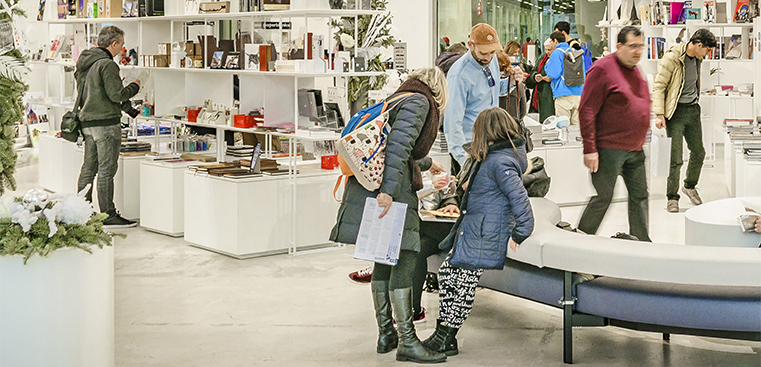More entertainment as museums change
2020-03-04

The book Museum Marketization: Cultural Institutions in the Neoliberal Era is written by researchers from various scientific disciplines in Sweden and internationally. It is aimed at a wide audience, including researchers, students, cultural institutions, companies, authorities, and politicians, among others.
"The hope is that the book will lead to increased reflection and debate around the ongoing  marketisation of museums and cultural institutions and on marketing as a cultural phenomenon integrated into today's society," says Karin M. Ekström, editor of the book and Professor of Business Administration at the University of Borås.
marketisation of museums and cultural institutions and on marketing as a cultural phenomenon integrated into today's society," says Karin M. Ekström, editor of the book and Professor of Business Administration at the University of Borås.
Increased accessibility
The book discusses how commercial knowledge and marketing have not always been viewed positively in the cultural sphere. Today, these are instead seen as a necessity as competition between museums, cultural institutions, and other leisure activities is increasing. Museums and cultural institutions are expected to offer experiences of a different nature compared to previously and to be available to more visitors. By reaching a wider audience, they contribute to increased democratisation and social sustainability. Parallel to this development, several institutions are struggling with economic restrictions.
Focus on number of visitors
Increased marketisation has meant that ideas of a market economy are present in both private and state-funded funded cultural institutions. In addition to attracting more visitors through attractive exhibitions, sponsorship and the hosting of events are commonplace nowadays.
"Most museums today have a shop, restaurant, or café that markets the museum. It is not uncommon for visitors to find their way there rather than to the museum," says Karin M. Ekström.
The marketisation process has meant that museums’ roles have changed from being primarily philanthropic and educational to having a focus on hosting experiences and entertainment. Karin M. Ekström believes that it is important to ask critical questions, such as the extent to which cultural institutions actually reach a wider audience, and the extent to which accessibility and entertainment have come to dominate the activities and whether, in this case, it has been at the expense of other things.
"It is important to reflect on whether measurement tools and goals to reach out to many visitors in an easily accessible way have come to overshadow the importance of exhibitions that challenge and require more of the visitor than mere entertainment. There is a risk if complex experiences are neglected," says Karin M Ekström.
About the book
The book Museum Marketization: Cultural Institutions in the Neoliberal Era (Ed. Karin M. Ekström, Routledge 2020) is based on a research project funded by the Torsten Söderberg Foundation and the book's 12 chapters are written by researchers in various scientific disciplines in Sweden and internationally.
The book consists of three parts with different approaches: 1) tensions between arts and business, such as how art is valued in different contexts, how culture has come to be seen as an important instrument for developing regions and cities; 2) market orientation of museums and cultural institutions, such as the consequence of changes in cultural policy and through adopting marketing tools from business, how the interaction between arts, business and politics is evident in some museums, how the focus shifts from museums' collections to experiences; and 3) marketing tools such as branding and sponsorship, how museums build brands, what role museums play in marketing a country, how cultural sponsorship works and has evolved over time.
Text: Lina Färm
Photo: Mostphotos (genre photo), Suss Wilén (portrait photo)

